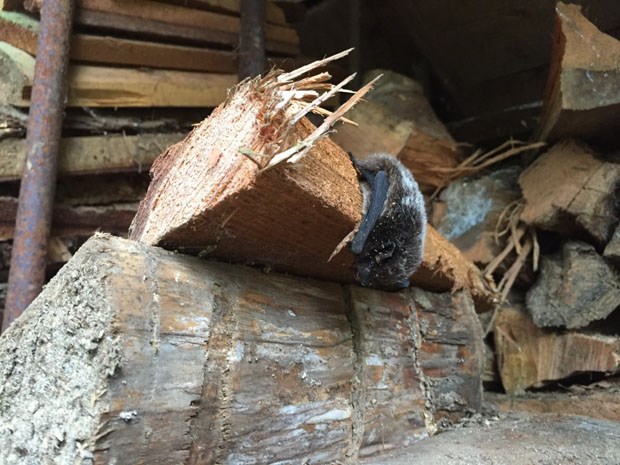If the spring weather makes you feel like going outside, you are not alone. Warm temperatures mean that bats are becoming active after a winter of hibernation. Reporting spring bat activity can help researchers identify where bats may spend the winter and learn about regional differences in the timing of hibernation.
To observe bats, go outside at dusk, near a pond, forest or rocky bluff, and look for bats flying as they hunt for insect prey or head out for a drink. You may also find bats roosting in unusual places as they travel from winter to summer areas.
Don’t be surprised to find a sleeping bat in a woodpile, under an overhang or tucked into a corner of the shed. These animals may be resting for a few days before continuing on, and should be left alone if they are in a safe place. If you have a bat house or a roost site in a building, check for new guano to know when your bats are back.
You can report sightings to the BC Community Bat Program at www.bcbats.ca. To learn more about your local bats, their habitats and life cycle, contact your regional Community Bat Program coordinator. Many regions offer presentations about bats and bat habitat, or guided bat walks. Inquire about events in your neighbourhood.
Reporting any dead bats as well as your first sighting of spring bat activity will help with efforts to monitor for white-nose syndrome. White-nose syndrome is a deadly bat disease, caused by a fungus that was introduced to North America.
Not harmful to humans, it has caused the death of millions of bats in eastern North America and is now on the west coast in Washington state. Currently there are no treatments for white-nose syndrome, however, mitigating other threats to bat populations and preserving and restoring bat habitat may provide bat populations with the resilience to rebound.
If you do find a dead bat, report it to the CBP (1-855-922-2287 ext. 11 or [email protected]) as soon as possible. Never touch a dead bat with your bare hands. Please note that if you or your pet has been in direct contact with the bat you will need further information regarding the risk of rabies to you and your pet.
Funded by the Habitat Conservation Trust Foundation, the Forest Enhancement Society of BC, the Province of BC, and the Habitat Stewardship Program, the BC Community Bat Program offers public outreach activities, provides information about bats in buildings, and coordinates a citizen-science bat monitoring program.



